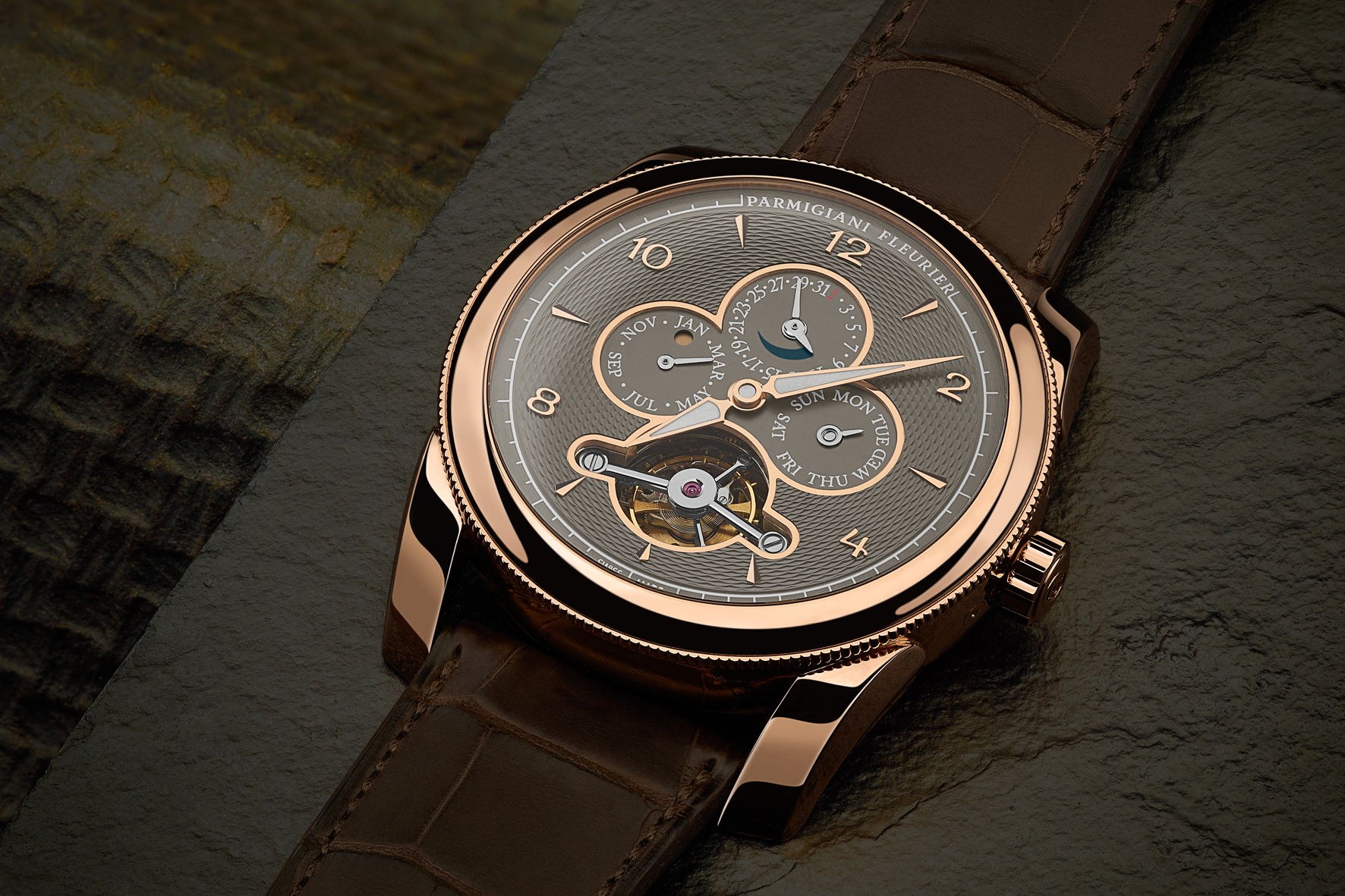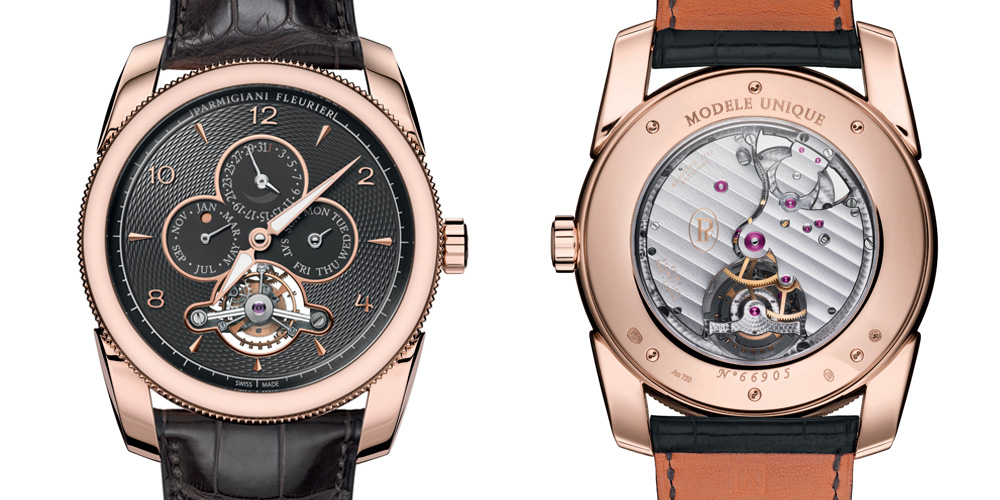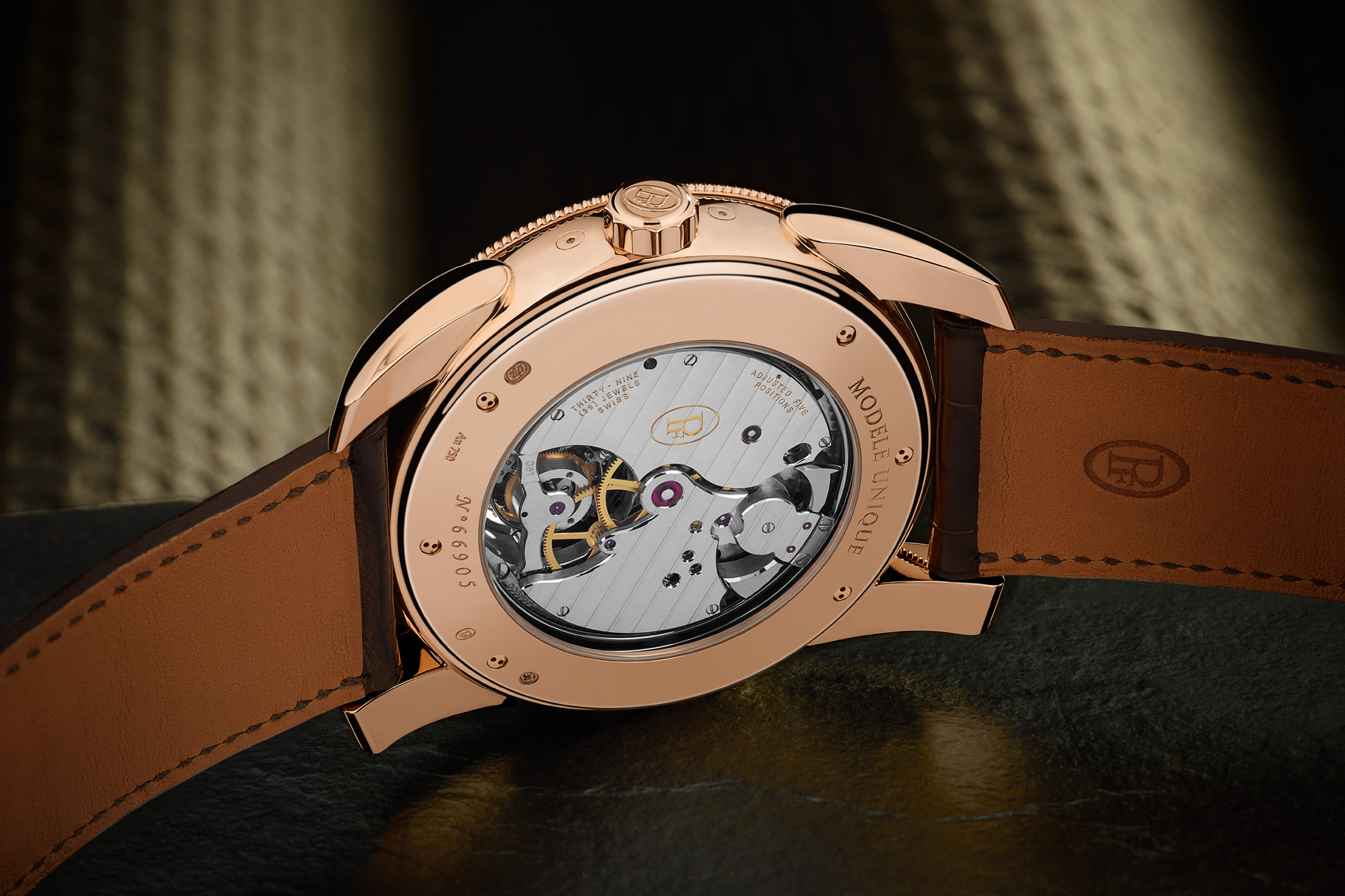Parmigiani Fleurier: Tecnica Ombre Noire
17 May 2019The Tecnica Ombre Noire is the last Parmigiani’s creation, a unique piece that celebrates a variety of complications from the great tradition of Haute Horlogerie, such as the perpetual calendar, minute repeater and tourbillon.

The “rice-grain” guilloché slate-coloured gold dial contrasts with the 18-carat rose gold indices. An aperture at 6 o’clock allows you to admire the tourbillon, while the month, date, day and leap year indications, as well as the power reserve, occupy the upper part of the dial. The skeletonised delta-shaped hour and minute hands complete the ensemble and allow you to read the different measurements.
The Tecnica Ombre Noire features an 18-carat rose gold 45mm case designed to optimise the resonance of the minute repeater chime. The case houses “cathedral” chimes. This type of chime makes the casing up operation even more complex than a standard complication.

The piece also features Parmigiani Fleurier’s iconic teardrop-shaped lugs. These were inspired by Fibonacci and his golden ratio, both so important to Michel Parmigiani in all of his creations.
As its name suggests, the Tecnica Ombre Noire is shrouded in mystery. For example, the minute repeater activator is integrated in the bezel. The traditional side bolt, which makes this grand horological complication so beloved of connoisseurs, is therefore absent. This mechanism posed a challenge for the development teams when ensuring the water resistance of the timepiece, as the surface area to be protected from water is much larger when a bezel is present.

Three grand complications are integrated in the hand-wound movement that drives the Tecnica Ombre Noire. In addition to the minute repeater with “cathedral” chimes, a tourbillon and a perpetual calendar place this timepiece in the category of the most complex timepieces in Haute Horlogerie.
As is the case for all Parmigiani Fleurier creations, all of the movement components were treated with the most delicate decorative work.
